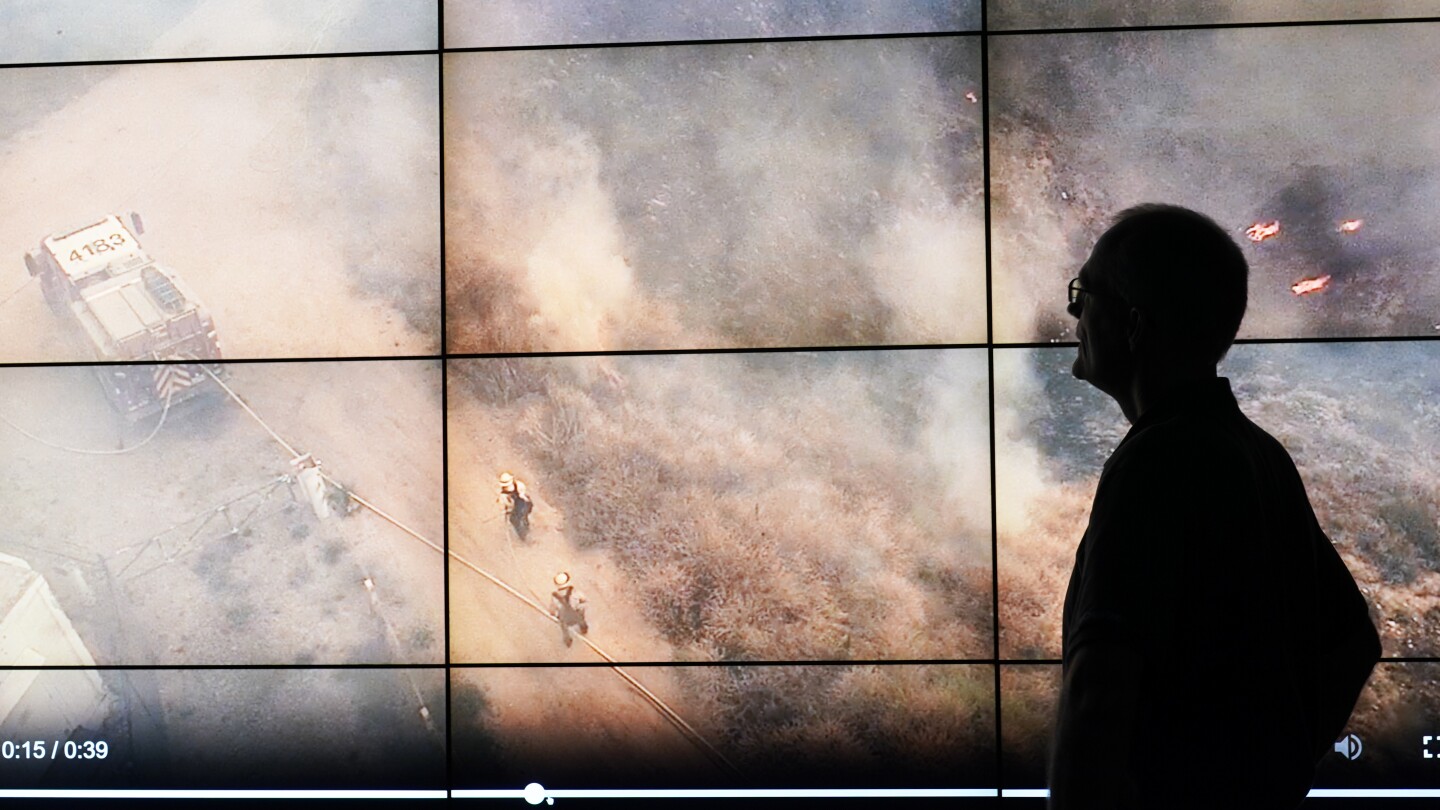The risk of wildfires is climbing. So are new artificial intelligence solutions to battle them

LONDON (AP) — Wildfires fueled by local climate alter have ravaged communities from Maui to the Mediterranean this summer, killing quite a few men and women, exhausting firefighters and fueling desire for new answers. Enter artificial intelligence.
Firefighters and startups are applying AI-enabled cameras to scan the horizon for indicators of smoke. A German company is making a constellation of satellites to detect fires from room. And Microsoft is working with AI models to predict where the next blaze could be sparked.
With wildfires turning out to be larger and much more intense as the globe warms, firefighters, utilities and governments are scrambling to get forward of the flames by tapping into the most current AI engineering — which has stirred each worry and enjoyment for its prospective to change life. When significantly stretched very first responders hope AI gives them a leg up, people are however wanted to test that the tech is accurate.
California’s major firefighting company this summer time began screening an AI program that seems to be for smoke from much more than 1,000 mountaintop digicam feeds and is now expanding it statewide.
The method is built to uncover “abnormalities” and warn emergency command centers, exactly where staffers will verify whether it is in truth smoke or a thing else in the air.
“The natural beauty of this is that it quickly pops up on the display and all those dispatchers or get in touch with takers are able to interrogate that screen” and establish whether or not to send a crew, reported Phillip SeLegue, staff members main of intelligence for the California Office of Forestry and Hearth Safety.
The cameras, element of a network that staff previously experienced to watch, deliver billions of bytes of info for the AI program to digest. While people however need to have to ensure any smoke sightings, the procedure can help lower tiredness amid staffers ordinarily monitoring a number of screens and cameras, alerting them to glance only when there is feasible hearth or smoke, SeLegue said.
It is now aided. A battalion main obtained a smoke notify in the middle of the evening, confirmed it on his cellphone and identified as a command center in San Diego to scramble very first responders to the distant location.
The dispatchers explained that if they hadn’t been alerted, the fire would have been substantially greater mainly because it likely would not have been observed right up until the up coming morning, SeLegue reported.
San Francisco startup Pano AI usually takes a comparable strategy, mounting cameras on cell towers that scan for smoke and inform prospects, such as fire departments, utility corporations and ski resorts.
The cameras use pc eyesight equipment learning, a type of AI.
“They’re properly trained extremely particularly to detect smoke or not, and we train them with photographs of smoke and pictures of not smoke,” CEO Sonia Kastner said.
The illustrations or photos are mixed with feeds from federal government climate satellites that scan for hotspots, together with other details resources, these kinds of as social media posts.
The technologies will get around one particular of the most important troubles in the standard way of detecting wildfires — relying on 911 phone calls from passers-by that want confirmation from staffers prior to crews and drinking water-dropping planes can be deployed.
“Generally, only one particular in 20 of these 911 phone calls are in fact a wildfire. Even all through fireplace time, it could be a cloud or fog or a barbecue,” Kastner explained.
Pano AI’s programs do even now count on ultimate affirmation, with professionals actively playing a time lapse of the digicam feed to make sure it’s smoke mounting.
For battling forest fires, “technology is turning into definitely crucial,” explained Larry Bekkedahl, senior vice president of vitality shipping and delivery at Portland Common Electric, Oregon’s biggest utility and a Pano AI buyer.
Utility organizations from time to time play a function in sparking wildfires, when their electric power traces are knocked down by wind or struck by slipping trees. Hawaii’s electric powered utility acknowledged that its electricity lines started a devastating blaze in Maui this summer months after evidently being downed by large winds.
PGE, which offers electrical power to 51 cities in Oregon, has deployed 26 Pano AI cameras, and Bekkedahl claimed they have assisted speed up response and coordination with crisis companies.
Earlier, fire departments were “running around on the lookout for things and not even truly realizing precisely where by it’s at,” he said. The cameras assistance detect fires quicker and get groups on the ground faster, shaving up to two several hours off response occasions.
“That’s significant in phrases of how rapidly that fireplace can can unfold and expand,” Bekkedahl reported.
Utilizing AI to detect smoke from fires “is relatively simple,” said Juan Lavista Ferres, chief knowledge scientist at Microsoft.
“What is not easy is to have plenty of cameras that deal with plenty of places,” he reported, pointing to vast, remote parts in northern Canada that have burned this summer months.
Ferres’ group at Microsoft has been creating AI types to forecast wherever fires are likely to start. They have fed the model with maps of regions that burned previously, alongside with local weather and geospatial data.
The program has its limits — it cannot predict random events like a lightning strike. But it can sift as a result of historical climate and local climate facts to detect designs, this kind of as spots that are usually drier. Even a road, which implies people today are nearby, is a hazard issue, Ferres explained.
“It’s not heading to get it all correctly suitable,” he explained. “But what it can do is it can construct a chance map (centered on) what transpired in the earlier.”
The technological know-how, which Microsoft strategies to present as an open up resource resource, can assistance very first responders hoping to determine out where by to target their restricted means, Ferres said.
A different enterprise is hunting to the heavens for a option. German startup OroraTech analyzes satellite visuals with artificial intelligence.
Using advantage of developments in digital camera, satellite and AI technological know-how, OroraTech has introduced two mini satellites about the size of a shoebox into lower orbit, about 550 kilometers (340 miles) earlier mentioned Earth’s area. The Munich-primarily based business has ambitions to send out up eight additional subsequent 12 months and inevitably set 100 into area.
As wildfires swept central Chile this year, OroraTech explained it delivered thermal pictures at evening when aerial drones are utilized considerably less commonly.
Months soon after OroraTech launched its next satellite, it detected a hearth close to the community of Keg River in northern Alberta, the place flames burned remote stretches of boreal forest repeatedly this summer months.
“There are algorithms on the satellite, pretty efficient ones to detect fires even faster,” CEO Thomas Gruebler claimed.
The AI also usually takes into account vegetation and humidity concentrations to determine flare-ups that could spawn devastating megafires. The technological innovation could assist thinly stretched firefighting businesses direct resources to blazes with the likely to induce the most injury.
“Because we know just wherever the fires are, we can see how the fires will propagate,” Gruebler reported. “So, which fireplace will be the massive fireplace in a single day and which will halt on their possess.”
___
AP Know-how Author Barbara Ortutay in San Francisco contributed.
/cloudfront-us-east-1.images.arcpublishing.com/gray/MZZ6VZA235A7XOAVDRAO3AOUWQ.jpg)





